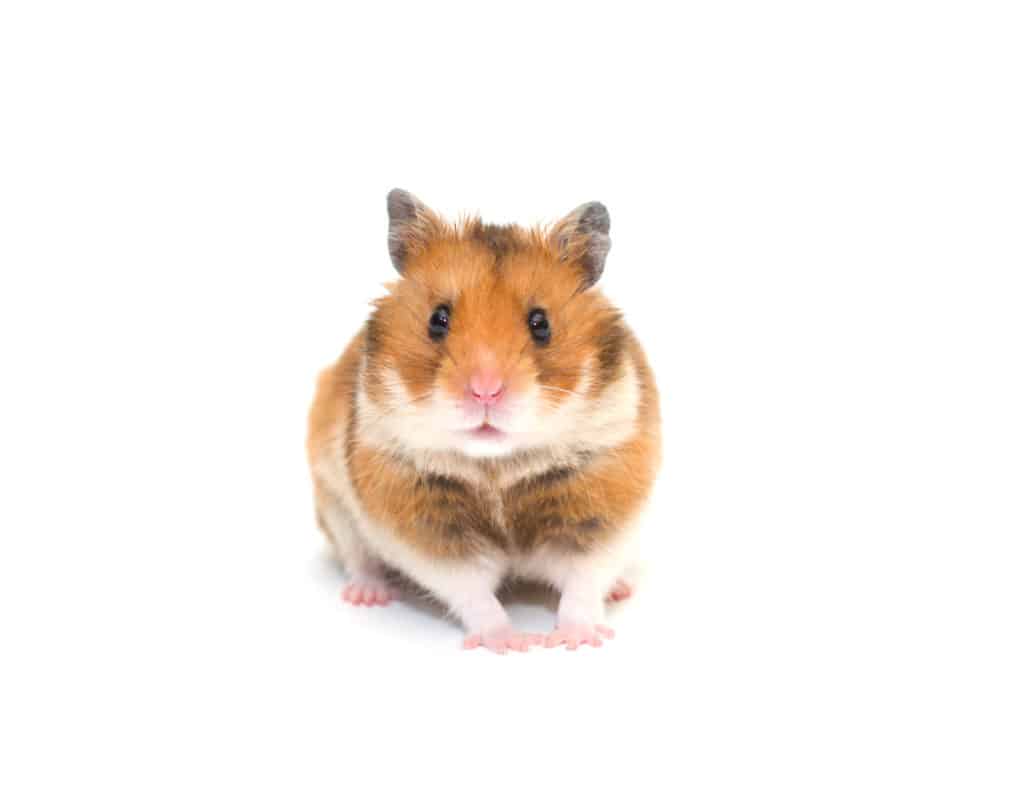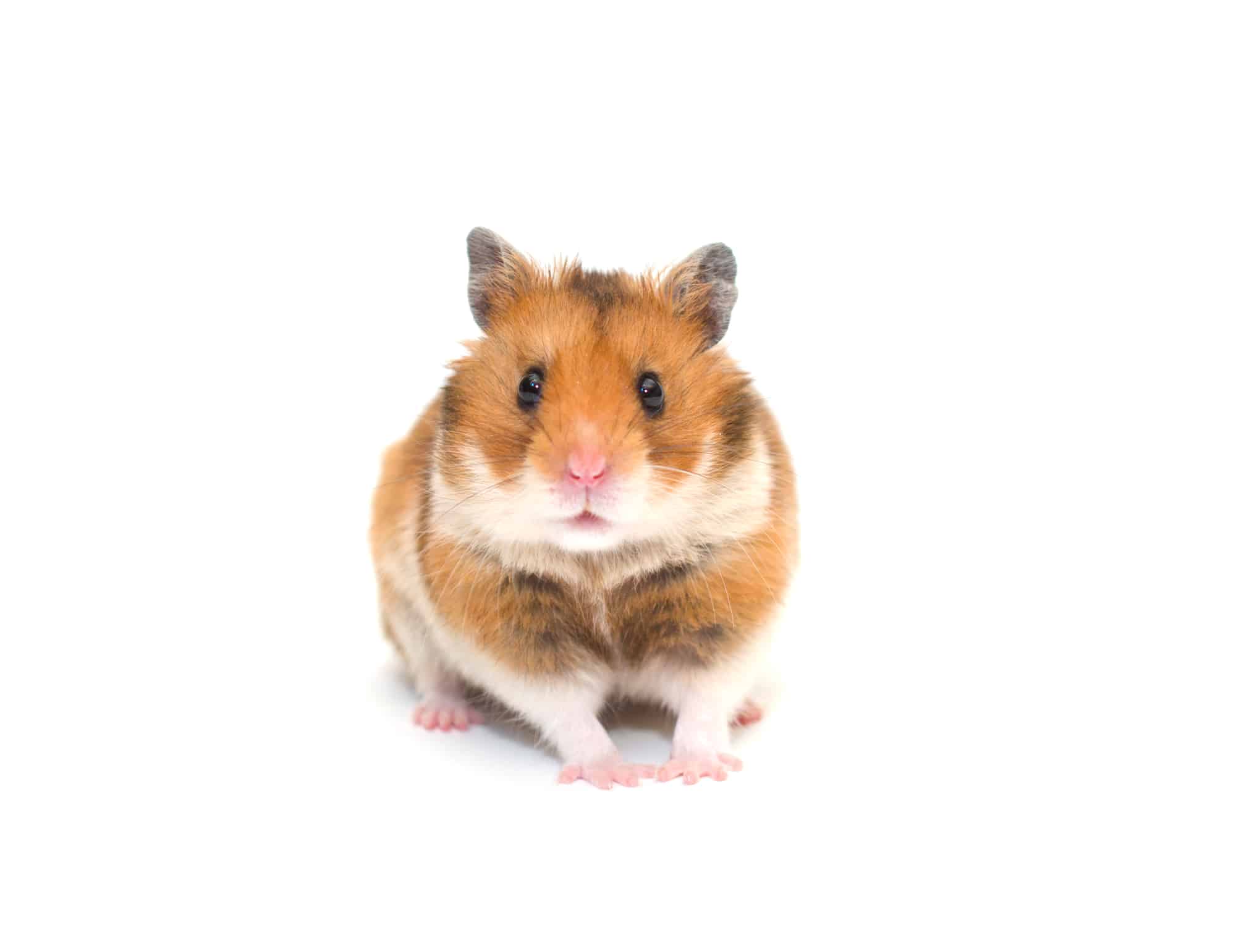Like humans, pet hamsters are also prone to many medical conditions. One of these medical conditions is bumblefoot. In this blog post, we will look at what causes bumblefoot in hamsters, what its symptoms are, and how to treat it.
What is bumblefoot?
Bumblefoot, also known as Pododermatitis, is a medical condition that affects not only hamsters but also other pets like guinea pigs and rats. Bumblefoot, as the name suggests, is a condition that affects an animal’s foot. When an animal suffers from Bumblefoot, its feet become inflamed.
The root cause of bumblefoot in hamsters is the cuts, abrasions, and scrapes that form on a hamster’s footpad due to his daily activities. Through these injuries, bacteria enter a hamster’s foot, causing infection and inflammation. Soon, the hamster’s footpad becomes red and sore. Bumblefoot eventually overgrows and spreads to the whole foot, making it extremely painful for the hamster to move his paw. When not treated promptly, bumblefoot can be deadly for hamsters.
What causes bumblefoot in hamsters?
Just like the diseases affecting humans have risk factors (that increase the chance of a person contracting the disease), bumblefoot has several risk factors as well (Source: Companion-Animals). Let’s look at these risk factors below:
- Your hamster’s weight is one factor that increases the chances of your hamster contracting bumblefoot. If a hamster is overweight, his body places a lot of pressure on his feet. The excess pressure can make your hamster experience pain in his footpad and increase his chances of contracting bumblefoot.
- Cages with wire floors can easily cause injury to your hamster’s feet. If your hamster is obese, too, the injury only adds fuel to the fire, intensifying the pain experienced by your little pet. This makes your hamster prone to bumblefoot.
- The next risk factor is long uncut toenails. What would happen if you had long nails on some of your toes? Obviously, it would create an imbalance while walking (The nails in some of your toes would bend downwards. These nails would prevent those toes from making complete contact with the ground, whereas other toes would make complete contact with the ground. This would create an imbalance in your walking posture). The same is true for your hamster too. If he had long toenails, it would create an imbalance. As a result, he would be forced to walk in a strange way, which would put excessive pressure on certain parts of his foot. Toenails that are too long can also pierce the footpads, causing injury and pain. Hence, long uncut toenails can also cause bumblefoot in hamsters.
- Poor sanitation can also make your hamster prone to bumblefoot. For example, if the bedding isn’t changed promptly, urine and the fecal matter of your hamster can accumulate. Over time, the bedding, which is actually supposed to serve as a safe environment for your hamster, will become a breeding place for harmful microorganisms like bacteria. If your hamster’s feet are already injured, then the bacteria can enter your hamster’s feet through the scrapes, cuts, and abrasions and cause bumblefoot. So, poor sanitation can make your hamster prone to bumblefoot.
How to prevent bumblefoot?
As the saying goes, ‘Prevention is better than cure.’ So, before we look at the symptoms of bumblefoot and how to treat it, let’s find out how to prevent it.
As we saw before, several factors make your hamster prone to bumblefoot. So, by avoiding these factors, you will be able to prevent your hamster from contracting bumblefoot. Not just bumblefoot, your hamster will be less prone to many other illnesses as well and will lead a healthy life.
- Since obesity can increase the chances of your hamster contracting bumblefoot, you should be wary of what you feed your hamster. Giving sugary and/or fatty foods often can contribute to obesity. Besides these foods, some foods are dangerous for some breeds of hamsters because they are prone to certain illnesses. So, seek a veterinarian’s help in formulating a healthy diet plan for your hamster.
- Provide proper housing to your hamster. Since a wired floor can hurt a hamster’s feet, choose a cage that has a smooth floor instead of a wired floor. This will prevent injury. Also, provide soft bedding like shredded paper instead of wood shavings, which can hurt your hamster’s little feet.
- Since overgrown toenails can cause imbalance and lead to bumblefoot, if your hamster has overgrown toenails, take him to a vet. The vet can trim your pet’s nails properly or can teach you how to do it yourself.
- Since poor sanitation can help harmful microorganisms breed in your hamster’s bedding, choose proper bedding for your hamster. Ideally, the bedding you choose should be not only soft but also absorbent. If not, your hamster’s urine will seep to the bottom of the cage and accumulate on the cage floor. With time, besides being a breeding place for harmful pathogens, it will also create a foul-smelling scent that wouldn’t go away. And since a hamster’s sense of smell is stronger than a human’s, this pungent smell will stress your hamster out. So, use bedding that is absorbent and soft. Moreover, you should spot clean the bedding where your hamster urinates or defecates every day. You should also replace (most of) the bedding with new bedding once every week.
- Opt for a solid running surface. Don’t use mesh or wire running wheels because they can cause injury to your hamster’s feet.

Symptoms of Bumblefoot in hamsters
Unlike other illnesses that affect internal organs and are difficult to detect, Bumblefoot is quite easy to detect. If your hamster suffers from bumblefoot, his feet will be red and swollen. He will be lazy and lethargic and show a reluctance to move around. Sometimes, you may also be able to notice ulcers on his feet.
If not treated promptly, bumblefoot can result in swollen lymph nodes and even cause arthritis. In extreme cases, amputation of the hamster’s feet might be the only solution possible.
Stages of Bumblefoot
Bumblefoot can progress through your hamster’s paw in three stages (Source: Hamsters Authority):
- Stage 1 – Your hamster’s foot appears red and slightly inflamed.
- Stage 2 – Your hamster’s footpad becomes more inflamed and red. The protective layer of your hamster’s foot has been compromised, and hence, his foot is prone to infection by harmful microorganisms.
- Stage 3 – The Infection, as well as the inflammation in the foot, has become severe. Your hamster has unbearable pain in his foot and, hence, cannot move his paw. The inflamed part of the foot might turn brownish-red in color. There might be a discharge of pus from the infected areas. This stage is extreme and needs immediate medical care.
Treatment of bumblefoot
Initial stage
When bumblefoot is in its initial stage, the following treatments can be done at home.
Vitamin C helps reduce inflammation, plays a major role in repairing body tissues, and contributes greatly to the healing of wounds. So, Vitamin C is a perfect antidote to bumblefoot. Therefore, you can give Vitamin C to your hamster through a small dropper every day. This helps his body fight against bumblefoot.
You can create an Epsom salt bath by mixing Epsom salt with a sufficient amount of water. Then, hold your hamster in such a way that his injured foot soaks in the Epsom salt bath. Hold him in that position for about 20 minutes. Epsom salt reduces inflammation and redness. It soothes your hamster’s swollen feet and removes dead scales. It acts as an antibacterial solution killing the harmful pathogens in your hamster’s feet. Repeat this process twice every day. Once your hamster’s wounds start healing, you can reduce it to once every day.
Another method you can use to combat infection is to clean your hamster’s feet with salt (iodine) water. Do you remember your mother asking you to gargle salt water when you had a cold or sore throat? There is a reason why she asked you to do it. Salt water is a great disinfectant. It kills harmful bacteria. So, salt water is a simple yet great remedy against the bacterial infection that causes bumblefoot. Once you have cleaned your hamster’s foot with salt water, you can cover his foot with bandages to protect it against further infections. But you should change the bandage regularly to felicitate faster healing.
Alternatively, you can also use Manuka honey, which has antimicrobial, anti-inflammatory, and antiseptic properties. You can either apply Manuka honey to your hamster’s infected foot directly (as in the case of salt water above) or create a bath and dip your hamster’s foot in it (as in the case of Epsom salt bath above).
Later stages
If your hamster’s bumblefoot has already reached the second or third stage, it is best to take him to a veterinary doctor. The vet will cut your hamster’s toenails and the hair around his infected foot. Then, he will clean your hamster’s wounds and soak the infected foot in an antibiotic solution. If the bumblefoot is too painful, the vet might also give pain relievers.
In extreme cases, amputating the infected foot might be the only possible solution.



